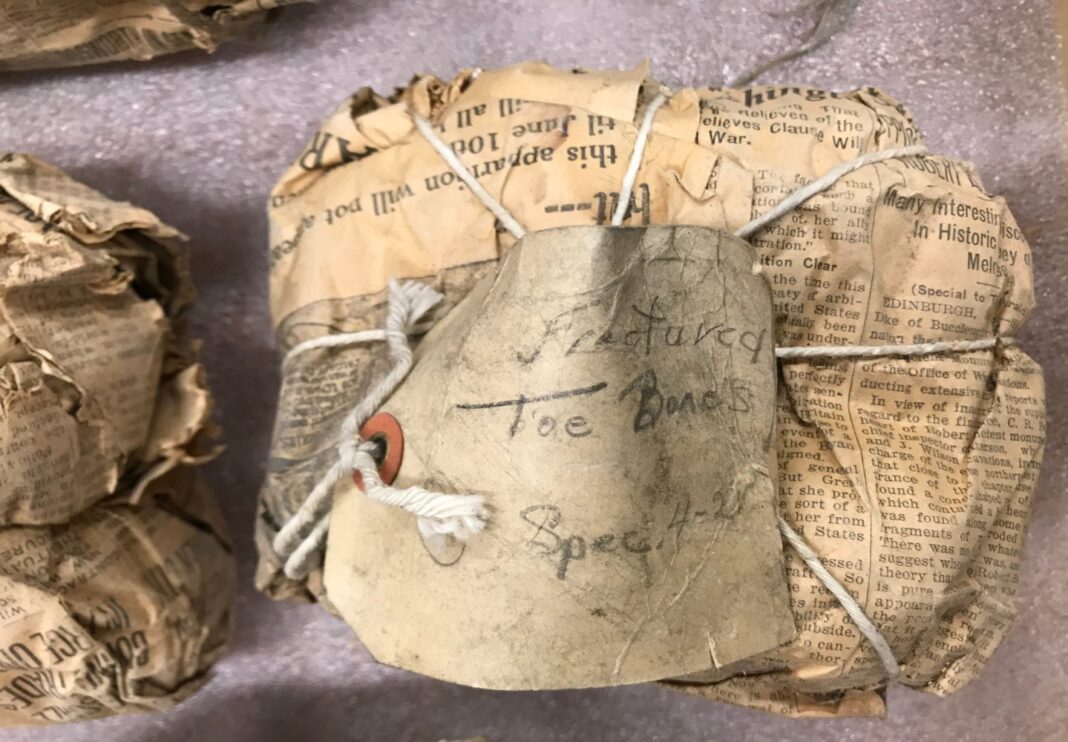The remains of ancient animals were wrapped in 100-year-old newspapers.
Two dozen fossils, wrapped in multiple layers of newspaper and tied with twine, were found in wooden boxes on one of the shelves in the basement of the University of Alberta’s southern campus in Edmonton. The bones forgotten by researchers, apparently, did not attract the attention of university workers for more than half a century, and, judging by the markings, were the “catch” of the archaeological expeditions of 1920 and 1921.
Paleontologist Clive Coy says researchers are in no rush to unwrap the fossils as the newspaper wraps are now of interest as part of the University of Alberta’s history.
However, we already know from the handwritten inscriptions on the tags that the finds include three skulls of fossil turtles recovered from sediments near the Judith River in southern Alberta and Montana. The then paleontologists were sure that this deposit was one of large deposits, but now it is known that this is not the case.
“We now know that the topmost layer is marine sediments that formed at the end of the Cretaceous, when this part of the world was flooded by the ocean. Turtles most likely lived even earlier and originate from the Canadian Dinosaur Park, which existed somewhere between 72 and 76 million years ago. ”- Clive Coy.
In the province of Alberta, about 200 kilometers from Calgary, is the Dinosaur Provincial Park, established in 1955 to protect a fertile animal fossil site. The park owes its creation to John Allan, the university’s first geologist, who set out to create a collection of fossil fauna and flora for the inhabitants of Alberta, and to George Sternberg, whom Allan persuaded to lead the expeditions of 1920 and 1921.
However, in 1922, Sternberg left for the Chicago Field Museum, and nothing was done to study his finds until 1934, when Allan managed to secure funding and re-hire Sternberg. In 1935, the University of Alberta hosted the first dinosaur exhibit at a government office west of Toronto. She stayed there for two decades, until the exhibits were moved to the basement of the geological building at the University.
Today, the University’s Laboratory of Vertebrate Paleontology is one of 30 registered museum collections on campus, with some 65,000 specimens. Some of the first fossils are now stored in the laboratory – wrapped in newspaper.









